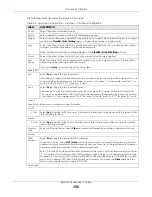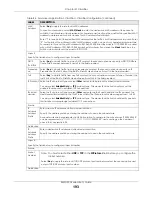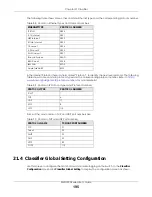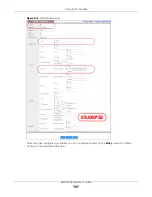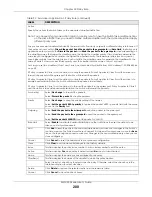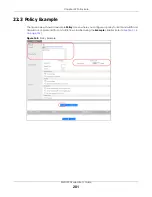
Chapter 24 Multicast
XMG1930 Series User’s Guide
205
C
HAPTER
24
Multicast
24.1 Multicast Overview
This chapter shows you how to configure various multicast features.
Traditionally, IP packets are transmitted in one of either two ways
–
Unicast (one sender to one recipient)
or Broadcast (one sender to everybody on the network). Multicast delivers IP packets to just a group of
hosts on the network.
IGMP (Internet Group Management Protocol) is a network-layer protocol used to establish membership
in a multicast group
–
it is not used to carry user data. Refer to RFC 1112, RFC 2236 and RFC 3376 for
information on IGMP versions 1, 2 and 3 respectively.
24.1.1 What You Can Do
• Use the
Multicast Setup
screen (
) to display the links to the configuration
screens where you can configure IPv4 multicast settings.
• Use the
IPv4 Multicast Status
screen (
) to view IPv4 multicast group
information.
• Use the
IGMP Snooping
screen (
) to enable IGMP snooping to forward
group multicast traffic only to ports that are members of that group.
• Use the
IGMP Snooping VLAN
screen (
) to perform IGMP snooping on up to
16 VLANs.
• Use the
IGMP Filtering Profile
(
) to specify a range of multicast groups that
clients connected to the Switch are able to join.
24.1.2 What You Need to Know
Read on for concepts on Multicasting that can help you configure the screens in this chapter.
IP Multicast Addresses
In IPv4, a multicast address allows a device to send packets to a specific group of hosts (multicast
group) in a different subnetwork. A multicast IP address represents a traffic receiving group, not
individual receiving devices. IP addresses in the Class D range (224.0.0.0 to 239.255.255.255) are used for
IP multicasting. Certain IP multicast numbers are reserved by IANA for special purposes (see the IANA
website for more information).
IGMP Snooping
A Switch can passively snoop on IGMP packets transferred between IP multicast routers or switches and


